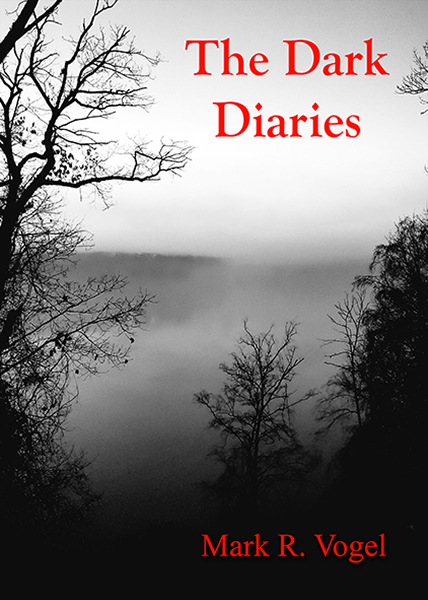Claude Rains’s stars in his first sound role (his second film) as the Invisible Man. However ironical, director James Whale, in his underdog classic, portrays a society unwilling to acknowledge those unlike themselves while giving us the most terrifying monster in the Universal monster canon. Equally remarkable in relation to the highly imaginative, thought-provoking script is that the special effects by John Fulton steadfastly fascinate modern viewers even after repeated viewings.
A chemist named Jack Griffin (Claude Rains) who–in an attempt to impress his fiancée, Flora (Gloria Stuart), by achieving greatness in the sciences–concocts a formula which makes him invisible. However, unbeknownst to Griffin, one of the ingredients in his chemical elixir, Monocaine, creates mental instability. Shortly after arriving at the Lion’s Head Inn in Iping, seeking solitude in order to search for an antidote, the Monocaine takes hold as Griffin begins experiencing more and more frequent delusions of grandeur. His megalomania fails to stop short of omnipotence in act and legislation as he quips to his forced partner in crime, Arthur Kemp (William Harrigan)–a former colleague who works under Flora’s father, Doctor Cranley (Henry Travers)–that he now possesses the power to kill anyone he wishes and could make the world “grovel at my feet.” As he begins his “reign of terror,” the townspeople and the local police scurry to find a way in which to locate and contain the killer.
One reading of James Whale’s covert adaptation of H. G. Wells’s novel of the same name is that he transformed the British science fiction writer’s socialistic, Nietzschian cautionary tale into a mocking condemnation of society’s projection, interpretation, and treatment of gays as the director metaphorically portrays such an individual as a literally disembodied voice. Twenty-nine years before Ralph Ellison did much the same with his masterpiece, Invisible Man–taking the figure of the African American male and metaphorically depicting the dilemmas of said individual as the wishfully unseen entity roams amid white society–Whale issued the figure of Jack Griffin, a man so engrossed in his studies alongside his male colleague, Arthur Kemp, and their employer, Cranley, that he forgets about his fiancée, Flora. He even states that the drugs comprising his experiment “light up my brain.” Once the townspeople report the existence of the unimaginable, the Chief of Police (Holmes Herbert) attempts to dismiss the incendiary claim as mere mass hysteria, stating that no such thing exists and that such erroneous reports are merely the effects of an overactive imagination spurred on by alcoholism. Yet, Whale doesn’t stop his indictment here. He mocks the masses’ inability and unwillingness to accept that such an individual not only exists, but may very well be within their unknowing presences, by casting Griffin as a killer with impunity, thus exponentially fanning the satirical flames so to speak as the townspeople frantically lock and board up their doors (he parallels said sentiment by having a barfly speculate that the foreign stranger may very well be an escaped convict). Yet, in concurrence with such a theme during 1930’s Hollywood, Whale’s homosexual figure is an apologetic gay (the director was at one time set to direct Dracula’s Daughter, one of the forerunners of repentant lesbian cinema) in that Griffin is attempting to find a cure to return him to “normalcy,” thus permitting him to once again return to his beloved fiancée.
Interesting due to the manner in which it is similarly portrayed, the fictitious drug Monocaine, a phonetic hop, skip, and a job from Cocaine, evokes a hysterical reaction from those who–aren’t necessarily using it–but are merely discussing it. Thus, three years before Louis Gasnier’s Reefer Madness, Whale inserts a prophetic parody of a culture’s frenzied reaction to drugs and their supposed insanity-inducing effects.
What is ingenious is how Whale creates what is arguably the most horrific monster in all of cinema. Not only do we shutter in fear at Griffin’s diatribes explicating his itinerary for terror, but the director further turns the thumbscrews by having Griffin state exactly when he will kill Kemp as he establishes what would later be dubbed “Hitchcockian suspense” as we nervously await the killer’s prophecy to become manifest. Yet, what is more harrowing is the ease in which Griffin settles himself into his omnipotence as he skips along while stalking a potential victim as he merrily sings “Here We Go Gathering Nuts in May” as the childlike id moves freely and without restraint throughout society, knocking men’s hats off and stealing children’s bicycles amid his tyranny. What results is Griffin producing the highest body count of any of the Universal monsters before Flora is left without anyone but her father (Whale’s retribution for not wanting to do the picture and, after the studio forced his hand, leaving Henry Frankenstein standing at the finale of the titular film two years before). Ironically, the sadistic pleasure that Griffin takes in his power is usurped once it is revealed that he is no longer in control of his faculties and that his impetus for having conducted the experiment was solely due to the desire to make Flora proud of him. (Yet this isn’t absolute in that Whale hints that Griffin’s real ruse in his yearning to garner further admiration from his fiancée is affirmation of self in his desire to thrust his name above all other scientists’).
Predictably, the work is not without a scathing sense of black humor, a Whale trademark for which many return time and time again to experience. However, in The Invisible Man, most of the subverted comedy is confined to the situational dialogue as Cranely announces that Griffin has “disappeared” after he realizes that his research assistant hasn’t been “seen” for a set period. Also, as Griffin outlines his murderous intentions, he tells Kemp, “Don’t stare at me” before declaring that his victims will be comprised of “big men, little men–just to show we make no distinction” as if Griffin, in the wake of his sovereign supremacy, still houses an illogical preoccupation with social perception in that his acts might otherwise be construed as not being politically correct or might house an agenda outside of merely anarchic mayhem. Punctually, the aforementioned instance of the killer skipping while singing, however morbid, forces a chuckle from even the most stern of audience members after Griffin outlines the personal nuances of being a monster: he must be allowed at least an hour of privacy after eating in order to allow the food to digest and therefore become invisible inside his stomach, he cannot go out when it is raining, and, coyly, he must remain astutely cognizant of dirt under his fingernails.
Though a masterpiece in philosophy as well as execution, the script does suffer, interestingly enough, only when it deviates from the novel. The characters of Flora and her father are presented in order to establish an arbitrary romantic subplot which, obviously (which is Whale’s sin here), was a marketing concession made at the discretion of the studio heads to have a female star opposite Rains. Furthermore, though John Fulton’s special effects still dazzle even by today’s standards, we see footprints in the snow made, not by a bare foot, but by a shoe (thus we’d be able to see the said article of clothing on Griffin if he was wearing them) atop the omitted collar on the opposite side of the neck from the camera as the invisible man bounces around a room wearing only a shirt. (Fulton achieved invisibility by crafting the technique now referred to as Chroma Keying, a variant of the now standardized green screen: He cast the actor in black velvet against a black velvet backdrop before merging prints, thus accounting for the missing piece of fabric.)
Of all of the Universal Monster films, James Whale’s The Invisible Man is easily the most underrated in his assessment of how the homosexual remains “unseen” in the world continues to be relevant even today. Not content to merely use his central figure as a sociological metaphor, he parodies the paranoia evoked by the presence of such an individual in society by creating the most terrifying of the studio’s famed killers as Jack Fulton’s special effects bring Jack Griffin’s megalomania to chilling reality.
-Egregious Gurnow
- Interview with J.R. Bookwalter - January 22, 2015
- Interview with Andrew J. Rausch - January 22, 2015
- Interview with Rick Popko and Dan West - January 22, 2015
- Interview with Director Stevan Mena (Malevolence) - January 22, 2015
- Interview with Screenwriter Jeffery Reddick (Day of the Dead 2007) - January 22, 2015
- Teleconference interview with Mick Garris (Masters of Horror) - January 22, 2015
- A Day at the Morgue with Corri English (Unrest) - January 22, 2015
- Interview with Writer/Director Nacho Cerda (The Abandoned, Aftermath) - January 22, 2015
- Interview with Actress Thora Birch (Dark Corners, The Hole, American Beauty) - January 22, 2015
- Interview with Actor Jason Behr, Plus Skinwalkers Press Coverage - January 22, 2015


